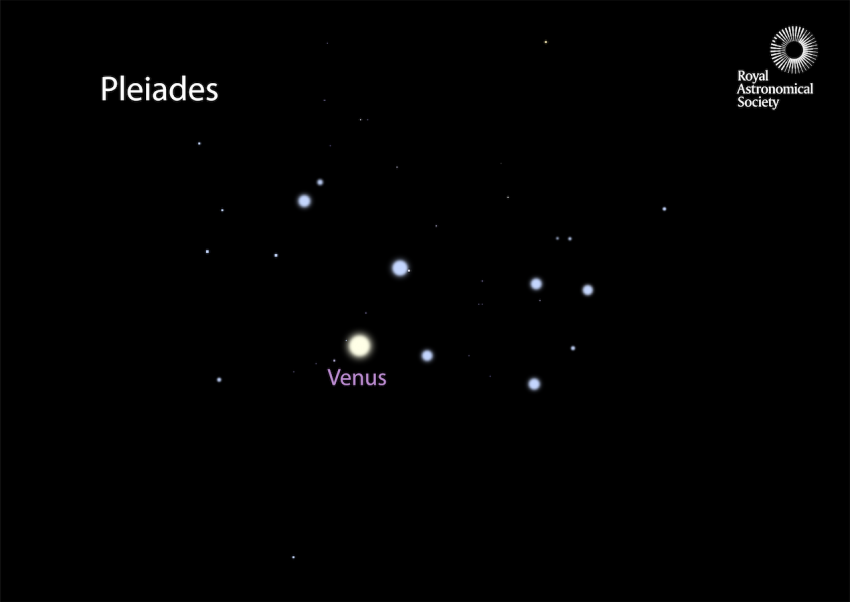Skywatchers can see an unusual sight in the evening of 3 April: the planet Venus in front of the Pleiades star cluster.
From around 2030 BST, Venus should be very easy to spot in the darkening twilight sky. The planet is about the size of the Earth, and its thick carbon dioxide atmosphere reflects about 75% of the sunlight that falls on it. It's also the closest planet to the Earth, tonight around 95 million kilometres away, so is usually the next brightest object in the night sky after the Moon.
RAS Deputy Executive Director Robert Massey explains how to see Venus and the Pleiades
As the sky darkens, the Pleiades cluster should become visible too. This is a grouping of around 1,000 stars at a distance of 444 light-years from the solar system (so more than 100 million times as far away as Venus). Six or seven of these are visible to the unaided eye - so the cluster is often called the 'seven sisters' too.
Although the planet and the star cluster are easy to see with the eye, binoculars give a much better view, even from an urban location. A smartphone with a good camera should also capture both fairly easily, at least with a long exposure with the camera held steady on a wall.
If you do take a picture then tweet us and we'll try to share a selection of the best images in the next few days.
Media contacts
Dr Robert Massey
Royal Astronomical Society
Tel: +44 (0)20 7292 3979
Mob: +44 (0)7802 877 699
press@ras.ac.uk
Notes for editors
The Royal Astronomical Society (RAS), founded in 1820, encourages and promotes the study of astronomy, solar-system science, geophysics and closely related branches of science. The RAS organises scientific meetings, publishes international research and review journals, recognises outstanding achievements by the award of medals and prizes, maintains an extensive library, supports education through grants and outreach activities and represents UK astronomy nationally and internationally. Its more than 4,400 members (Fellows), a third based overseas, include scientific researchers in universities, observatories and laboratories as well as historians of astronomy and others.
In 2020 the RAS is 200 years old. The Society is celebrating its bicentennial anniversary with a series of events around the UK, including public lectures, exhibitions, an organ recital, a pop-up planetarium, and the culmination of the RAS 200: Sky & Earth project.
Follow the RAS on Twitter, Facebook, Instagram and YouTube
Download the RAS Podcast from Audioboom


